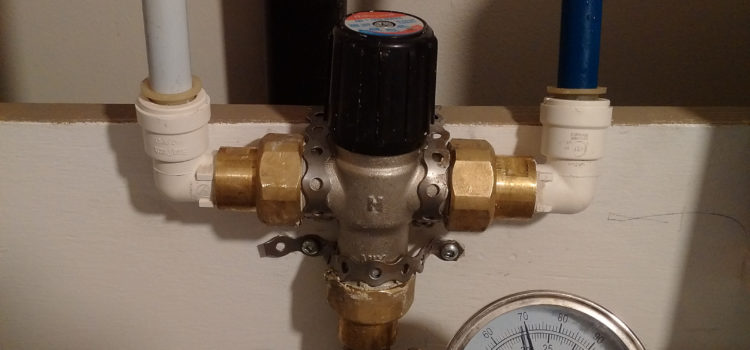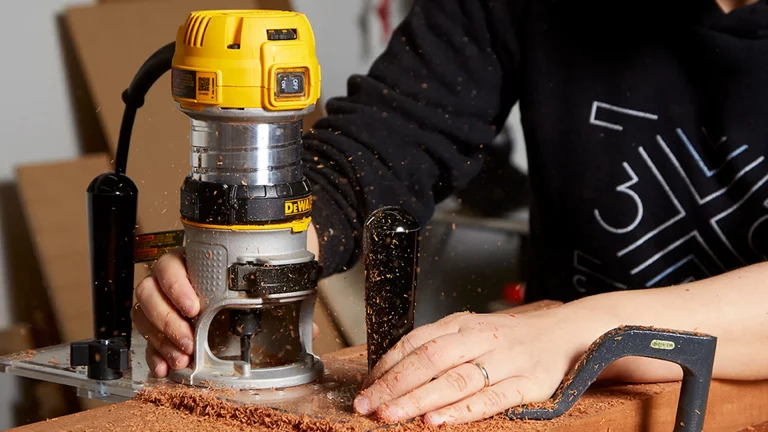Different Types of Routers Woodworking : Pros and Cons Guide
Wood routers are ideal tools for wood workers with the aid of which they can easily carry out various applications of wood working related to making creative gouges, edging and operational joints.

Wood router reviews suggest that there are a number of different brands and models available in market and thus a wood worker gets all the choice to choose the best one that suits his skill level and requirements of job.
Various types of routers can be used and these can add more efficiency and effectiveness in your work. Here we classified wood routers according to placement of motor to the router base. This is the most common classification and it gives you two basic types plunge and fixed routers along with an interchangeable combination base kit.
Top 3 Main types of wood router Comparison table
Here’s a comparison table highlighting different types of wood routers based on various points:
| Feature | Fixed-Base Router | Plunge Router | Combo Router |
|---|---|---|---|
| Depth Adjustment | Limited | Versatile | Versatile |
| Cutting Control | Good | Excellent | Excellent |
| Versatility | Limited | Moderate | High |
| Bit Changing | Time-consuming | Quick & Easy | Quick & Easy |
| Precision | Good | Excellent | Excellent |
| Stability | High | High | Moderate |
| Price Range | Affordable | Moderate | High |
| Best for | Edge shaping | Plunge cuts | Both |
Different Types of Routers for woodworking:
The two basic types of wood routers are fixed and plunge style and each of these constructions of routers have its own benefits and disadvantages. Understanding details related to both the types is important in order to find out the best wood router for your requirements.
1. Plunge Routers:
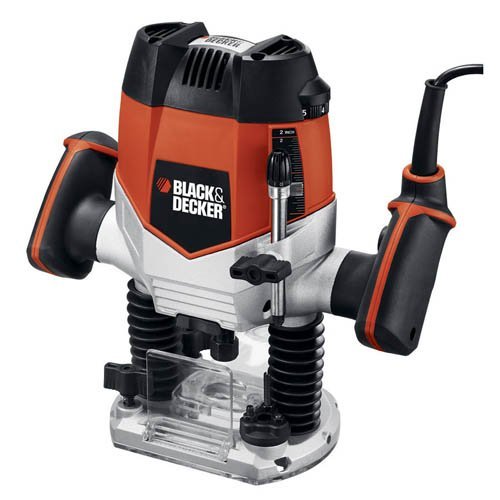
Plunge routers are machines that have their motor attached to a prig base so user has the liberty of plunging the bit directly in the center of the wood. The base of plunge routers is held with the motor with the help of two spring columns that makes it possible to retract the router bit. With the use of a force/pressure over base, the craftsman can plunge bit in middle of wood. Having a blade that is retractable, these routers are considered safest of both types.
Users can also adjust depth for their specific application while the machine is running. Bit depth with a plunge router can be changed by unlocking release system of the tool and user can then move the router base either inwards or outwards for depth control and setting.
Despite of the fact that this machine is safer, it is also a little technical to operate and a user working on a fixed router may take some time to get used to of this tool.
Wood workers who are professional and experienced can get most benefits out of this impressive tool as it works good for varied applications including those that are template based as well as free hand jobs too. Improved stability and control is ensued with most of the high-end plunge routers with introduction of soft start EVS motor system. As these routers are more versatile, thus they cost you more than a fixed router.
Pros:
- Plunge routers offer you convenience of adjusting depth in the middle of your task.
- They offer you increased vertical movement control for a cut and you can even make accurate cuts in the middle of your work piece surface.
- You can easily make deep inlay grooves, cuts and mortises with template/pattern applications. These routers are more versatile.
Cons:
- Plunge routers are more expensive than fixed base.
- You will need more practice to get your hands well over this tool.
- Plunge routers cannot be used with a fixed table base.
comparison table of plunge routers vs cordless routers:
| Feature | Plunge Router | Cordless Router |
|---|---|---|
| Power | Corded | Cordless |
| Speed | Variable | Variable |
| Collet size | 1/4 inch or 1/2 inch | 1/4 inch or 1/2 inch |
| Weight | Heavier | Lighter |
| Features | Fewer features | More features |
| Cost | Less expensive | More expensive |
2. Fixed Base Routers:

Fixed Base Routers are the ones that are appointed with a stationary fixed base and thus before you begin your specific routing job with this tool you need to set a specific depth. So throughout use of this tool for a particular job, the depth will remain same. So over cutting or gouging may not be possible with fixed routers. You can set a specific depth by raising or lowering motor on the router base.
For woodworkers who have just began wood working, fixed base routers are ideal choice for beginners because they are easier to use router. You will find them giving you a perfect performance with edge cutting and straight line accuracy with variable speed. You can even find some really small size fixed routers that are known as palm routers or trimmersand these have less power with small motors. Usually such tools are really light weight and used with a 1/4 inch shanks size.
Pros:
- Fixed routers are ideal choice for home use and for wood working beginners.
- They are perfect tools to be used for edge shaping and they offer you best precision.
- Fixed base routers are usually compact and thus are easier to handle and move.
- They have less number of moving parts and thus they cost you less than plunge routers.
- Fixed routers can be used with a table base.
- They are simple to use.
Cons:
- Fixed routers are not as versatile as plunge base.
- These tools cannot perform over cutting or gouging because of a fixed depth for a specific task.
Comparison of Fixed-Base and Plunge Routers
The following table compares the two main types of wood routers:
| Feature | Fixed-Base Router | Plunge Router |
|---|---|---|
| Base | Stationary | Movable |
| Precision | Less precise | More precise |
| Versatility | Versatile | Very versatile |
| Ease of use | Easy to use | More difficult to use |
| Safety | Safer | More dangerous if not used properly |
3. Interchangeable Combination Router Kits:

Keeping in view that some of the wood workers may not find it suitable to confine their job to any one kind of router, some of the leading manufacturers now offer interchangeable base routers combination kits.
These kits give you advantages of both fixed and plunge routers with options of both bases. You can easily detach motor from its base with the use of quick release level and so depending upon the requirement of your job, you can attach suitable base and work.
Despite of buying both different types of routers, more cost-effective decision would be to buy such kits that offer you performance and advantages of both tools with one machine.
Usually motor size of such kits is 75 to 2.25 HP and bit sizes offered would be 2 inches or even less. You can operate these bases as handheld or table mounted wood routers according to your ease of use.
Pros:
- Most suitable choice for those who need qualities of both fixed and plunge routers.
- You get benefits of both types without need of buying two machines.
- Cost of combination kits is less than buying two routers one fixed and one plunge base.
Cons:
- Changing bases would not seem viable if you will be switching tasks more frequently. So in that situation, buying two different routers would be more viable for increased efficiency.
Here is a comparison table of plunge routers vs combination routers:
| Feature | Plunge Router | Combination Router |
|---|---|---|
| Base | Plunge base | Fixed or plunge base |
| Versatility | Versatile | Most versatile |
| Power | More powerful | Less powerful |
| Speed | More speed options | Less speed options |
| Collet size | 1/4 inch or 1/2 inch | 1/4 inch or 1/2 inch |
| Weight | Heavier | Lighter |
| Features | Fewer features | More features |
| Cost | More expensive | Less expensive |
4. Cordless Router
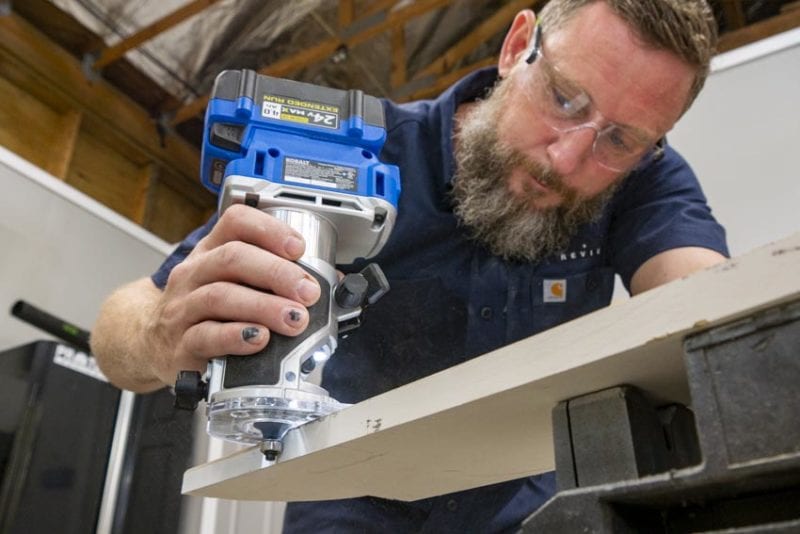
Overview: Cordless routers operate on battery power, making them highly portable and ideal for jobsites or projects where access to a power source is limited.
Pros:
- Increased portability without cords
- Convenient for job sites with limited power
Cons:
- Reduced power in comparison to corded models
- Limited battery life may require frequent recharging
5. Compact Router

Overview: Compact routers are smaller and more lightweight than traditional routers, making them ideal for small-scale projects or detail work that requires precision and control.
Pros:
- Lightweight and easy to control
- Ideal for small-scale and detail work
Cons:
- Limited in power for heavy-duty jobs
- Can be more difficult to use with larger bits
6. Laminate Trimmer
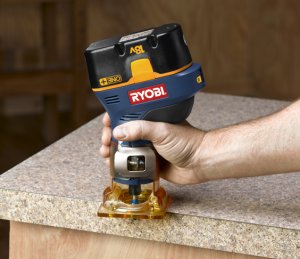
Overview: Laminate trimmers are lightweight, handheld routers designed specifically for trimming laminate and veneer surfaces. They typically feature a small motor and a compact design, making them portable and easy to use.
Pros:
- Lightweight and highly portable
- Ideal for trimming laminate and veneer
Cons:
- Limited to specific tasks
- Not suitable for heavy-duty woodworking tasks
Conclusion
By having a look at the basic features of both types of wood routers, it will now be easier for you to make a decision depending upon your job requirement. However if you want best of both worlds, buying a combination kit would be more suitable in terms of cost as well as for ease of maintaining a wood router.



